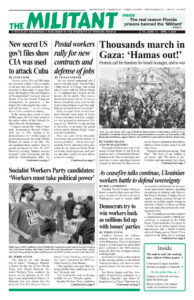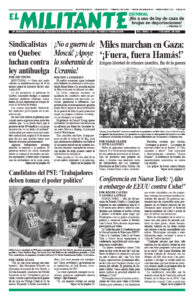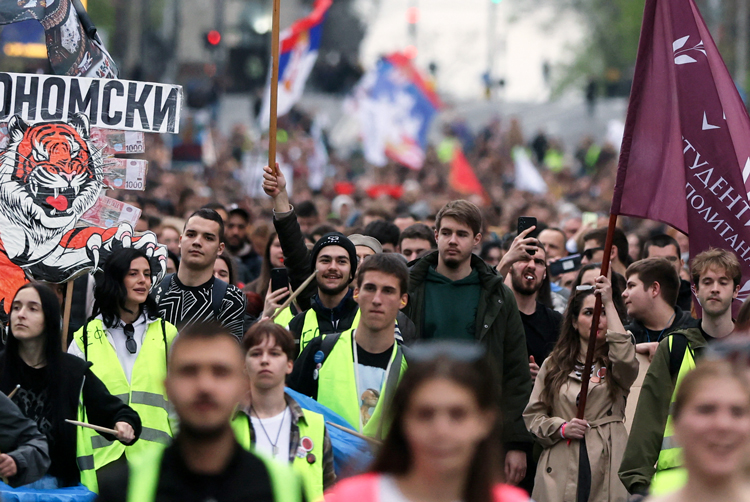Thousands turned out in Belgrade, Serbia’s capital, March 24 to protest plans to develop a luxury complex at the site of a former army headquarters destroyed during the 1999 NATO bombing. This marked the anniversary of the U.S.-led 78-day campaign that targeted civilian infrastructure, bridges, factories and power plants, killing thousands in the country.
Washington claimed it unleashed the barrage for humanitarian reasons, to protect Albanians in Kosovo, as Yugoslavia broke apart. But the U.S. rulers exploited the conflict to expand NATO’s reach and assert Washington’s “indispensability” over other imperialist powers.
On March 18 a mutual defense agreement was signed between the governments of Croatia, Albania and Kosovo, sparking a sharp reaction. Serbian President Aleksandar Vucic accused Croatia and Albania of starting an arms race in the region.
Croatian Defense Minister Ivan Anusic replied that the time when Zagreb sought Belgrade’s approval for its actions was long gone and would never return.
Serbia’s outgoing deputy prime minister, Alexandar Vulin, traveled to Moscow March 22 to meet with Sergei Shoigu, secretary of Russia’s Security Council. Vulin told the press that Moscow has worked with Belgrade authorities for months on how to deal with mass protests over a train station’s roof collapse in Novi Sad Nov. 1 that killed 16 people. Both referred to the protests as an attempted “color revolution,” a term they use to describe pro-Western protests that toppled governments in Ukraine, Georgia and Kyrgyzstan in recent decades.
Serbian toilers, like others worldwide, are facing the consequences of the falling apart of the imperialist world order put in place following World War II, escalated by Moscow’s three-year war against Ukraine. And for many in Serbia, distrust of Moscow is coupled with hatred of NATO.


